Is there a high probability of female-to-male transmission of HIV?
Hello, I am Dr. Bobo, in the CDC engaged in the prevention and treatment of AIDS, sexually transmitted diseases and other infectious diseases, AIDS prevention and treatment issues have in-depth research and extensive work experience, I come to you to answer, if you have questions about AIDS related issues, you can pay attention to Dr. Bobo, private letter consultation!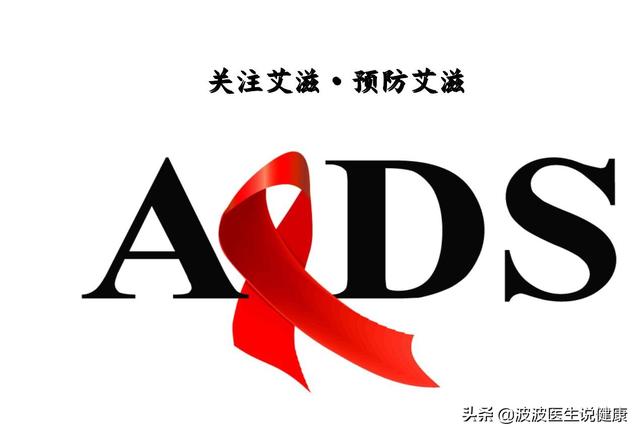
HIV exists in various body fluids of the human body, but the load of HIV in various body fluids is not the same, blood contains the highest level, followed by semen, vaginal secretion has a lower viral load than semen, amniotic fluid also has a higher load of HIV, saliva, sweat, urine, tears do not contain or contain a very small amount of HIV, which is not enough to cause infection.
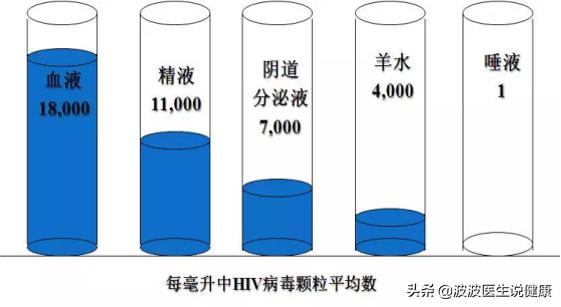
The U.S. has conducted relevant studies on the various ways of transmission of AIDS, and the results are as follows: the probability of blood transfusion transmission is the highest, because the blood has the highest HIV load; followed by childbirth (untreated), where the mother transmits it to the fetus, because in the process of delivery, on the one hand, the amniotic fluid is mixed with it, on the other hand, the mother will bleed; and once again, it is the shared use of syringes and needles for drug addiction, and before 2010, the transmission route of AIDS was mainly dominated by shared use of syringes for drug addiction. In our country, before 2010, the transmission of AIDS was mainly through sharing syringe drug use, and in recent years, due to the methadone treatment and needle exchange policy and the country's strong efforts to combat drug abuse and trafficking, it has become less common to contract AIDS through sharing syringe drug use.
The table shows that AIDS is transmitted through sexual intercourse with a probability of 0.1% from male to female and 0.05% from female to male, which shows that the probability of male-to-female transmission is many times greater than that of female-to-male transmission. This rate is derived from a single act of sexual intercourse without protection and in the absence of treatment.

If one is infected with HIV and undergoes regular treatment, when the HIV viral load is below the lower limit of detection, it can be assumed that HIV will not be transmitted sexually to the other person, even in the absence of any protective measures. "U=U" is now the focus of the AIDS prevention and treatment promotion, detection is treatment, through the treatment also reduce the chance of HIV transmission to each other.

Through the above, we can see that the probability of HIV infection in a single sexual act is indeed not high, but we can not take the risk, because the chances of being infected for oneself is only the difference between 0 and 1. In practice, we have indeed encountered some regrettable cases, that is, for the sake of a momentary pleasure without protection, and the result is a life of regret.
It is true that the probability of transmission from female to male is small, but it is important to use a condom when having sex with someone other than your spouse, because at this point it is not clear how infected the other person is.
Here's how I look at the issue of women with AIDS infecting men!
Currently, sexual transmission is an important route of HIV infection. Transmission generally occurs when HIV-containing bodily fluids from a positive person come into contact with a healthy person's mucous membranes or a broken wound.
Regarding the probability that a woman with AIDS will infect a man, it still exists, but it is relatively small. It is mainly related to the following aspects:
I. Analysis of the physiological characteristics of both men and women
1. The physiological structure of women is different from that of men. The mucous membrane of the female reproductive system has a larger contact area and is also more fragile. In the process of lovemaking between men and women, the area of force is larger, and it is easy to produce damage in friction, which leads to a large number of HIV discharged from the female body through the mouth of the damage and infected to healthy men. On the other hand, the body fluids secreted by women during lovemaking also contain a certain amount of HIV, which can also be transmitted to men. The male reproductive system is generally tougher and less prone to breakage, so the resistance will be greater.
2. The roles of men and women in the lovemaking process are different, resulting in a low probability of infection. Generally speaking, the male occupies the dominant power, all kinds of actions are also male in change, this way the result is that the male genital organs are less easy to damage, this way it seems to be infected with the probability is not high.

II. Health status of both men
1. If the woman is HIV-infected, but as long as she is able to take her medication regularly and correctly, has regular testing and checkups, and has good viral load control and a high CD4 value, then the woman's contagiousness is also very low!
Conversely, the transmission rate is higher in female infected persons!
2. If a man's body is in good basic condition and is not broken itself, the probability of contracting the infection is generally lower! The opposite will be higher.
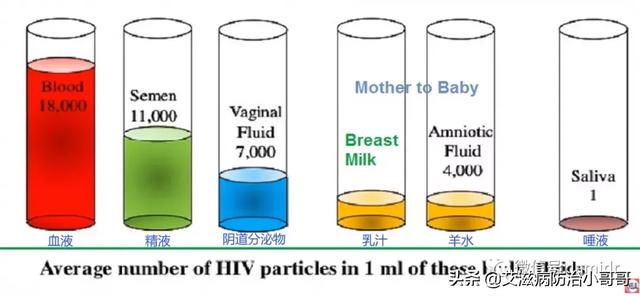
III. Probability of female-to-male transmission under normal circumstances
Not very high. The probability of female-to-male transmission is generally around 1 in 1,000!
But this is a matter of probability, because once you're caught, it's 100%.
That's why it's important to clean up your act!

In the disease control work for more than ten years, has been engaged in the prevention and detection of AIDS STDs, comprehensive theory and analysis of the actual situation, the chances of female-to-male transmission is less than male-to-female transmission, there is no condom, the male semen into the female body, there may be only one time on the infected, and conversely, the female carries the virus, if the male sex partner does not have sexually transmitted diseases (genitals are not broken), that the virus can not get into the body of the male. Kissing is also not able to infect the other person with HIV due to the small amount of virus and if the mouth is not broken.
If your sexual partner is HIV-positive, whether male or female, please be sure to use condoms correctly, the prevention of AIDS and sexually transmitted diseases is very good, and the sick party should also adhere to the medication, cooperate with the doctor's treatment, reduce the viral load, prolong the life of the protection of other people as well. Don't take chances, objectively speaking, the chance of infection and non-infection is 50%, but for a person, a family infection is 100% disaster. No one can guarantee that there are no broken places on the body and the immunity is always good.
Prevention of AIDS is not love, life and health come first!
Hi, I'm Dr. Qiao Fang of the Rheumatology and Immunology Department, formerly a general practitioner at the Sichuan Provincial People's Hospital, and I'll answer this question.

When it comes to AIDS, most people always feel that it is far away from them, if you have this kind of thought, congratulations, you should be a category of people with a relatively pure private life. In fact, there are many people who are worried that they have contracted AIDS through some channel and have summoned up the courage to go to the hospital specifically for a check-up to confirm it.

And as a medical industry practitioners, to see the unawareness of HIV patients really a lot, and then you look harmless, dressed in human form, as long as you are sick to the hospital need to take a blood test, the data will not tell a lie. There are old peasants in rags, there are also well-dressed urban white-collar workers, as well as 17 and 18-year-old students who came to have an abortion ......
Chengdu old super brother hospital to do physical therapy, clothes off scared young female nurses
Recall that last summer, the unit engaged in an activity to benefit the surrounding community, nearby residents can come to do physical therapy programs at low prices. A hot afternoon, the rehabilitation department came to an inch head, big belly middle-aged man, mouth with a toothpick, white t-shirt back sweaty piece of beach shorts on the flip-flops.
As soon as I entered the door, I found an empty physical therapy bed and sat down: "Little sister, you can do physical therapy here? I am next to the neighborhood, help me get it down! Recently, my back has been aching."
"Yes, you can lie down first!"
"Old Chao" pulled his T-shirt up to his neck, got down, and pulled out his cell phone: "Hey, Zhang? Go! Tonight with me to play, said the place girl can really ...... want to get, a moment I finished contact you."
Although the rehabilitation department of Chinese medicine also has other patients and Chinese medicine practitioners to communicate with the sound of family members waiting to brush the sound of Jitterbug, but Chengdu, "old super brother" the content of this phone call is still a little embarrassed, but the Chinese medicine practitioners responsible for the operation of the technician can only pretend not to hear, ready to prepare for the equipment to come.
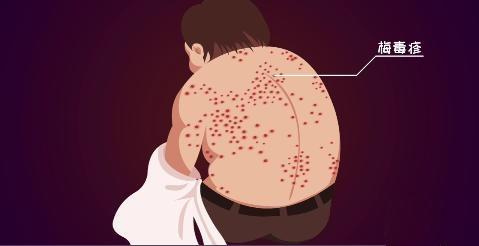
Looking at the greasy back of the "old Chao", the flaky light red rash is even more numbing, the Chinese medicine technician turned around and went out, and the director of the Department of Rehabilitation came in with him on the next trip. Huang Changqiong, the director of our Chinese medicine rehabilitation department, had worked in the rehabilitation department of West China Hospital for more than 40 years before retirement, and naturally he was more knowledgeable than the nurses.
After about 10 seconds of hesitation: "Little brother, you now have a skin disease, not suitable for acupuncture or cupping and so on! You can go to our director Zhao to prescribe some of the soothing and revitalizing medicine. Also, your body is very easy to suffer gout Oh, you can go to our laboratory free of charge to give you a check of uric acid Well?"
Two hours later, the Laboratory Department called, "Director Huang, that patient is not only syphilis positive, but also AIDS!"
If you walk by the river, you'll get wet sooner or later.
If it's like "Old Chao", who likes to "play with girls" for a long time; or some young people like to "date girls"; or hundreds of thousands of homosexuals in Chengdu, this part of the population is not physiologically compatible with the "play". The crowd engages in unphysiological "play" ...... In these scenarios, if you don't take protective measures for the sake of excitement, then you don't need to be concerned about the chances of infection; because even if the probability of a single infection is small, if you do it for a long time, many times, the infection will be Even if the probability of a single infection is small, if it is done many times over a long period of time, infection will come sooner or later.

The chances of HIV infection are not as high as one might think.
We've often seen scenes like this in movies and TV shows or on the news:
- Scenario 1: Drug-addicted parents are HIV carriers and have no choice but to give their children to the orphanage.
- Scene 2: Border police in Yunnan arrest drug dealers, who resist and bite the police;
- Scene 3: A surgeon operates on an AIDS patient and accidentally cuts his hand with a bloody scalpel.

Such a situation is very dangerous for the person concerned, but the probability of HIV infection will not be 100 percent and is not as high as we remember.
Next, they are presented in descending order of risk of infection.
1. Transfusion of blood or blood products 92.5% or more
Direct transfusion of blood or blood products with the virus carries the highest risk of infection, almost 100 percent.
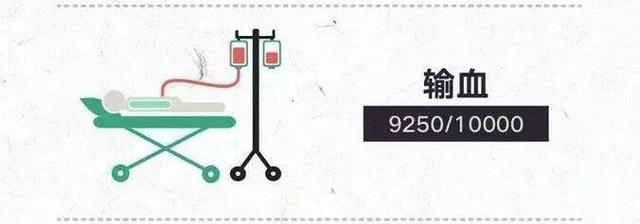
In the 1990s, there was a human blood smuggling business in a remote rural area of Henan Province, blood traders in order to save costs by using shared needles, resulting in a large number of AIDS infections, but also led to the emergence of AIDS villages. 2011, by Guo Aucheng, Pu Cunxin, Sun Haiying, Jiang Wenli, Wang Baoqiang, Cai Guoqing, and other stars of the interpretation of the film "The Most Lovely", but also on the sharing of needles, the spread of AIDS real story! If you are interested, you can go and watch it.

Movie 'The Favourite' tells the story of an AIDS village
With the modern blood donation system and the improvement of testing norms related to blood products, as well as the severe crackdown by law enforcement agencies, such transmissions have become rare.
2. Mother-to-child transmission (22.6% unblocked, 5% blocked)
In the absence of interruption measures, the risk of vertical transmission from HIV mothers is about 22.6%;
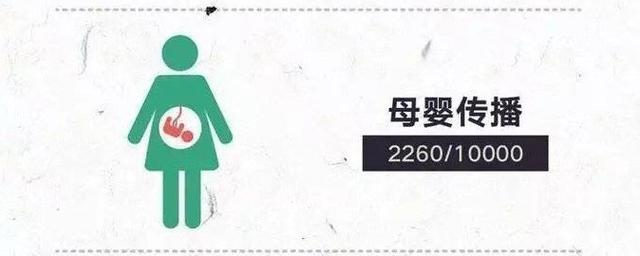
However, the risk can be reduced to less than 5% if the mother takes antiviral drugs in time and undergoes formal mother-to-child interruption.
3. Needle-sharing drug use 0.63%
The risk of transmitting HIV in a single transmission is around 0.63% for sharing a syringe needle with an infected person.

4. Needle-stick injuries via the skin 0.23%
The most common occupational exposure occurs when a nurse gives a needle and then accidentally sticks herself after doing so. The risk of contracting HIV through this needlestick injury is about 0.23 percent
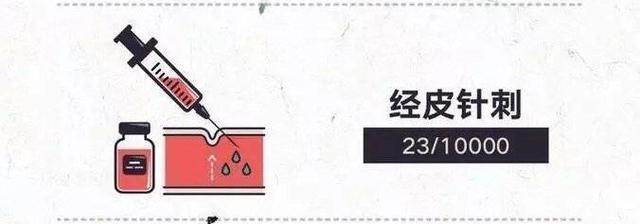
5, GJ (1 pass 0 1.38%, 0 pass 1 0.11%)
With unprotected GJ with an infected person, the risk of 1 transmitting the virus to 0 is 1.38%; while the risk of 0 transmitting the virus to 1 is relatively low at 0.11%.

As you can see, the risk is not low. It's no surprise that the number of HIV in both Basho is as high as the number of homosexuals in the country.
Note: For 0 here, gender can be male or female.
6. XJ (male to female 0.08%, female to male 0.04%)
The risk of infection is even lower with the conventional PP method of XJ. The risk of transmission from an infected man to a woman is about 0.08%, and the risk of transmission from an infected woman to a man is 0.04%.

7. KJ (all very low)
Although there are cases of HIV transmission through KJ, the overall risk is very low. Because the epithelial tissue of the oropharynx is thicker than that of the genital and rectal mucosa, it is not easy to break during intense friction; the oral mucosal tissue also contains a relatively small number of lymphocytes with CD4-positive markers, which can defend against foreign viruses to a certain extent; and the oral environment is not conducive to the survival of the virus, the probability of transmitting HIV through KJ is very low, and kissing is even more negligible.

8. Other behaviors
There are also many other behaviors that come into contact with an HIV-infected person, such as bites, sneezing droplets, kissing, sharing utensils, sharing sanitary ware, shaking hands, etc., for which there is only a very small, theoretical, and essentially negligible likelihood.
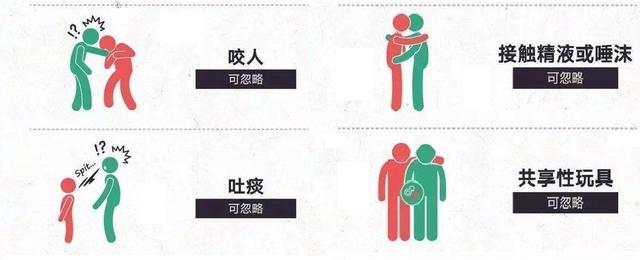
summarize
Through the introduction of this article on the risk of HIV infection by various behaviors, it may refresh some friends' knowledge about AIDS. However, it should be reminded that the above data is only the risk of a single behavior, such as unclean XING behavior and medical, police and other occupational exposure to the cumulative risk is still not to be underestimated. Like blood transmission, mother-to-child transmission and other [high-risk] behavior, after reasonable rules and regulations, as well as protection, blocking measures, can be reduced to [low-risk]; and itself [low-risk] a variety of XING behavior, if you can correctly use a condom, then the risk can also be reduced to negligible.

It is not easy to organize and publish! If you think it is helpful to read, please help point a concern or point a praise; if you have a different point of view, you are also welcome to leave a message below, we can discuss together; you can also transfer to your side need friends; thank you!
The main routes of transmission of HIV are sexual contact, blood contact and mother-to-child transmission, the essence of which is that whenever there is an exchange of bodily fluids, there is a risk of infection. Sexual contact is the main mode of transmission (including homosexual, heterosexual and bisexual contact), and the virus can enter the body and cause disease through small breaks caused by the friction of sexual contact. Factors associated with prevalence include the number of partners, the stage of infection of the partner, the mode of sexual intercourse, and protection during intercourse. The best way to rule out HIV infection is to get tested for HIV at the CDC or a medical facility (infectious disease hospital).
Transmission of HIV should be criminalized, and there is a loophole in the current criminal law that criminalizes only the buying and selling of sex with STDs. All sexual acts of persons with STDs should be criminalized in order to effectively curb the spread of AIDS.
Is there a high probability of female-to-male transmission of HIV?
There are no clear statistics on the probability of female-to-male transmission of HIV, but the relative probability of female-to-male transmission will be somewhat lower than the probability of male-to-female or male-to-male transmission.
The main recognized modes of transmission of AIDS are sexual contact, blood contact and mother-to-child transmission. Of these, sexual contact is the main mode of transmission. HIV exists in blood, semen and vaginal secretions, and is also found in saliva, tears, breast milk and other bodily fluids. if a man is HIV-positive, he can easily be infected through a break in the vaginal mucous membrane or a break in the mucous membrane of the anus or rectum during sexual intercourse with a woman or a man. If the woman carries HIV, during sex men such as penis intact without breakage or wear a condom, after sex in time to wash the penis, the probability of HIV infection is relatively male-to-female, male-to-male is a little lower.
If you have high-risk sex, you should go to the dermatology department of a regular hospital in time to check for infection, and generally need two laboratory tests, three months apart, to clarify whether you are infected with HIV.
This content was reviewed by Dr. Pan Wulin, Deputy Chief Physician, Department of Dermatology and Venereology, Hubei Provincial Hospital of Integrative Medicine.
Click here for details of the doctor's answer
Before answering this question, we first have to make a clear question: AIDS is a sexually transmitted disease, his transmission is mainly through the transmission of bodily fluids, bodily fluids transmission, the most common is sexual transmission, that is, unclean sexual contact, because HIV can be present in semen and vaginal secretions, in addition to the transmission of blood is also common, such as sharing of needles for intravenous drug injection, tattoos and so on. Understanding the transmission of AIDS, we know: AIDS as a sexually transmitted disease, as long as there is a history of such suspicious contact, there is a possibility of being infected, and the probability of infection has little to do with the female-to-male or male-to-female transmission.
Here is one more blocking measure to prevent blocking HIV after high risk:
Preferably within 2 hours after high-risk contact (the earlier the better), not more than 72 hours, because the HIV virus enters the human body about 72h to carry out a large number of replication, therefore, before this timely and reasonable use of antiviral drugs, can block the replication and spread of the virus, to avoid the occurrence of the infection, but the oral antiviral drugs (specific consultation with specialists) to be taken for 28 consecutive days, and can not be interrupted in the middle.
Levels of HIV in various body fluids
HIV is present in various body fluids in the body, but the amount of HIV in various body fluids is different, which determines the risk of contracting HIV from exposure to different body fluids.
Among the various body fluids, blood has the highest HIV content, at 18,000 per milliliter, followed by semen at 11,000, vaginal fluids, and amniotic fluid, which also has a high HIV load.
Saliva, tears, sweat and urine do not contain or contain very small amounts of HIV, not enough to cause infection, so normal contact such as kissing or hugging and shaking hands is not infected with HIV.
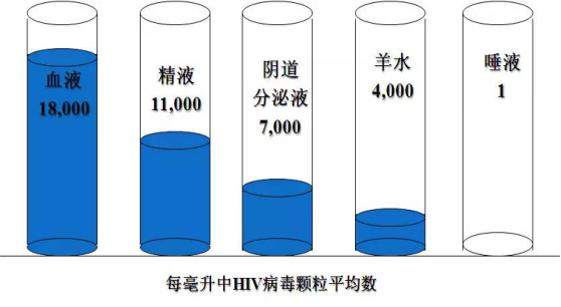
Odds of contracting HIV by all routes (single)
In the United States, studies have been conducted on the various routes of HIV transmission, and the results are shown in the chart below.
Blood transfusions have the greatest chance of contracting HIV, at 90%, and in the early stages of HIV discovery, the route of infection was mainly due to hemophiliacs who were infected through blood transfusions;
The second is delivery (untreated), because during delivery, it will be mixed with amniotic fluid and the pregnant woman's blood, and the chance of transmission to the fetus is very high, so for pregnant women who are infected with HIV, we always recommend cesarean section;
The probability of infection is 0.67 per cent. In China, before 2010, the spread of HIV was dominated by the sharing of syringes and needles, but in recent years, owing to the State's vigorous efforts to combat drug abuse, trafficking and other illegal and criminal behaviours, as well as measures such as needle exchanges and outpatient methadone treatment for drug abusers, HIV infections through drug abuse have become less common;
In the sexual pathway, which is subdivided into male-to-male sex (MSM), male-to-female heterosexual sex, the probability of male-to-male, male-to-female, and female-to-male transmission is different, and in male-to-male transmission, the recipient and the giver are different.
In a single sexual act, the probability of male-to-female transmission is 0.1%, and the probability of female-to-male penetration is 0.05%, with women being at a higher risk of contracting AIDS due to differences in their physiology;
In the MSM, the probability of infection is higher on the receiving side, at 0.5%, and somewhat lower on the giving side.
All of the above infection rates are derived when untreated and without any protective measures; the probability of infection is different if protective measures are taken or if regular treatment is given.

In 2016, UNAIDS held the World AIDS Conference, at which many experts and scholars reached a consensus to“U=U”. If HIV infection is followed by regular treatment, when the HIV load is below the lower limit of detection, it can be assumed that AIDS will not be transmitted sexually to the other person, even in the absence of any protective measures.
At present, the focus of AIDS prevention and treatment is on promoting testing and treatment, that is, through publicity, people who have engaged in high-risk behaviors should be tested for HIV antibodies as early as possible, and if they are diagnosed, they should take medication as early as possible; when the HIV load in the blood is lower than the lower limit of the test for more than half a year after regular treatment, HIV will not be transmitted to the other party through the sexual route, even if they have not taken any protective measures.
Therefore, friends who have had high-risk behavior, please be sure to take the HIV antibody test as soon as possible, if diagnosed, on the one hand, through treatment can control the condition, on the other hand, can also protect others from being infected; if excluded from the infection, can be put down, no longer afraid of their own will be infected.
Through the above, we can see that the probability of HIV infection in a single sexual act is indeed not high, but we can not take the risk, because the chances of being infected for oneself is only the difference between 0 and 1. In practice, we have indeed encountered some regrettable cases, that is, for the sake of a momentary pleasure without protection, and the result is a life of regret.
AIDS prevention
AIDS is an infectious disease, and any infectious disease can be prevented, and AIDS is no exception. Through a large number of case studies, we can conclude that AIDS is a disease that can be prevented but not completely cured, thus making prevention all the more important.
Currently, the focus of HIV prevention is on the sexual route of transmission. before 2016, HIV was mainly contracted through drug use and FSW, and statistics for 2020 show that the proportion of HIV infections through the sexual route is more than 96%, with non-marital, non-fixed sexual partners dominating the proportion of more than 50%.
Therefore, when having sex with someone other than your spouse (male or female), please make sure to use a condom correctly, every time, and throughout the entire time. We have come across cases in our work where the person said he used a condom but still got infected, and this was caused by not using a condom correctly.
There are now blocking drugs ...... You can think of AIDS as an upgraded version of Hepatitis B. Work hard to earn money, this disease is not really that scary anymore
This question and answer are from the site users, does not represent the position of the site, such as infringement, please contact the administrator to delete.